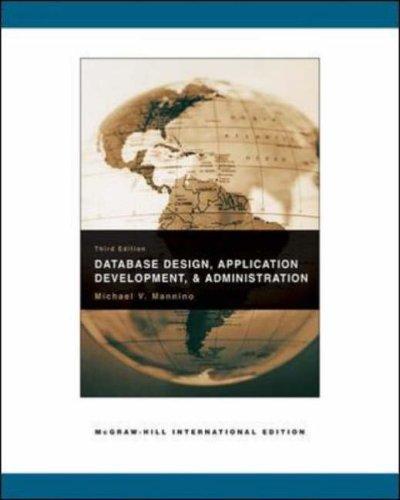Question
1. Consider the simple Caesar cipher C = (L + 3) mod 26 giving Letter: ABCDEFGHIJKLMNOPQRSTUVWXYZ Cipher: DEFGHIJKLMNOPQRSTUVWXYZABC a. Encode the string HELLO b. What
1. Consider the simple Caesar cipher
C = (L + 3) mod 26 giving Letter: ABCDEFGHIJKLMNOPQRSTUVWXYZ
Cipher: DEFGHIJKLMNOPQRSTUVWXYZABC
a. Encode the string HELLO
b. What is the deciphering formula?
2. Consider the simple Multiplicative cipher C = (5L) mod 26
a. Encode the string HELLO.
b. What is the deciphering formula?
c. Decrypt the string IARJ.
3. For RSA encryption we need a modulus that is the product of two prime numbers, p and q. Assumep=11andq=13,andthusn=p*q=143.
a. In this case, the RSA encryption exponent e must be relatively prime to what number? Show calculations/work.
b. If we choose e=19 and d= 19, would that work for this RSA implementation? Why or Why not?
4. Assume the letter D is represented by the number 3. Perform an RSA encoding of the message "3" using 7 for the public exponent, and n = pq = 1113 = 143 for the public modulus.
5. You receive a message that was encrypted using the RSA system with public key (27, 55), where 27 is the exponent and 55 is the modulus. These numbers are small enough that one can easily break the code. Find the private key i.e, d. (Hint: you need to find p and q, the prime decomposition of 55.)
6. Use the Principle of Mathematical Induction to prove that 3 divides (n3 + 3n2 + 2n) for all n 1.
7. Use the Principle of Mathematical Induction to prove that
1+3+32+33 +...+3n =(3n+11)/2 for all n 0.
Step by Step Solution
There are 3 Steps involved in it
Step: 1

Get Instant Access to Expert-Tailored Solutions
See step-by-step solutions with expert insights and AI powered tools for academic success
Step: 2

Step: 3

Ace Your Homework with AI
Get the answers you need in no time with our AI-driven, step-by-step assistance
Get Started


